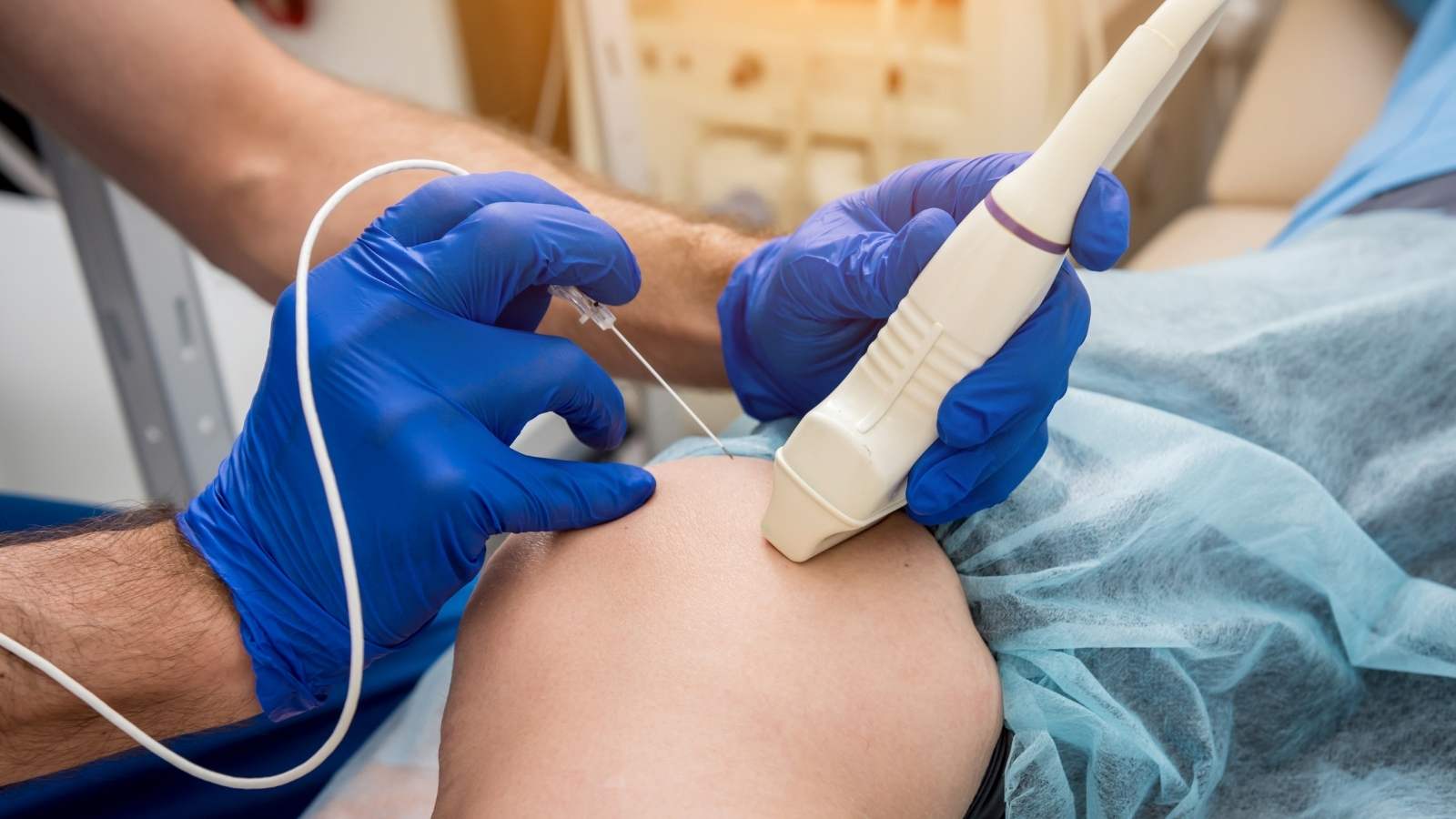Subclinical hyperthyroidism is a thyroid disorder characterized by low thyroid-stimulating hormone (TSH) levels with normal thyroid hormone values. Patients are often asymptomatic, but the condition may increase risks for cardiovascular disease and osteoporosis.
Potential causes of subclinical hyperthyroidism include multinodular goiter, Graves’ disease, or overuse of thyroid medication. Identifying the underlying reason is essential for determining the most appropriate treatment plan.
Symptoms may be absent or mild, but some patients experience palpitations, anxiety, or unexplained weight changes. Regular monitoring is necessary, as the condition may progress to overt hyperthyroidism if untreated.
Treatment options depend on patient age, cardiovascular status, and bone health. Observation, medication adjustment, or radioiodine therapy may be recommended to prevent long-term complications and ensure thyroid balance.
| Medical Name | Subclinical Hyperthyroidism |
| Causes | Toxic nodular goiter, early stage of Graves’ disease, excessive use of thyroid hormones, excess iodine intake |
| Risk Factors | Elderly individuals, history of thyroid disease, autoimmune diseases |
| Common Symptoms | Usually asymptomatic; mild symptoms such as slight anxiety, palpitations, weight loss, sweating may be seen |
| Diagnostic Methods | Laboratory tests showing low TSH and normal free T3 and T4 levels |
| Observed Complications | Atrial fibrillation, osteoporosis, increased cardiovascular risk (especially in the elderly) |
| Treatment Methods | Observation (in mild and temporary cases), antithyroid drugs, radioactive iodine therapy, thyroid surgery (rare) |
| Surgical Indications | May be considered in the presence of nodules, suspected cancer, or cases unresponsive to other treatments |
| Prevention Methods | Regular thyroid function tests, careful monitoring of medication doses, avoiding excessive iodine intake |
What Exactly Does Subclinical Hyperthyroidism Mean?
Subclinical hyperthyroidism is actually a condition detected by laboratory tests. The TSH hormone in your blood has fallen below the lower limit of normal. This is a sign that your thyroid gland is working slightly more than it should, or there is an external factor suppressing TSH. However, at this stage, the T4 and T3 hormones produced by the thyroid gland are still within normal values. If these hormones were also elevated, the condition would be called “overt” or obvious hyperthyroidism. The term “subclinical” means that the condition usually does not cause obvious symptoms, but this is not always the case.
Why Is the Diagnosis of Subclinical Hyperthyroidism Based Only on Blood Tests?
Because the symptoms of this condition are usually absent or very mild, and can be confused with many other situations. Complaints such as palpitations, mild irritability, or fatigue can be seen in anyone from time to time. Therefore, it is not possible to diagnose subclinical hyperthyroidism by just looking at complaints or examination findings. Blood tests are essential for a definitive diagnosis. Low TSH together with normal T4 and T3 levels form the basis of this diagnosis.
How Common Is Subclinical Hyperthyroidism in the Population?
The frequency of subclinical hyperthyroidism varies. In general, it is seen in about 1 to 2 percent of the population. However, some studies have found higher rates. It is more common with increasing age and in regions where iodine intake is insufficient. For example, in the elderly population, the incidence may reach up to 15 percent. It is much rarer in children. The prevalence of this condition, especially in aging societies, shows that it is an important health concern.
How Is Subclinical Hyperthyroidism Graded?
Grading subclinical hyperthyroidism according to its severity is important for understanding the risks and determining the approach to treatment. This is done by looking at how low the TSH level is. Usually, two grades are used.
In Grade 1 (Mild), the TSH level is below normal but still measurable, generally between 0.1 and 0.4 mIU/L. This is the more common form.
In Grade 2 (Severe), the TSH level is significantly suppressed, usually below 0.1 mIU/L. This is associated with higher risks and is an important factor in deciding on treatment.
Why Is the Grade of Subclinical Hyperthyroidism Important?
This grading is not just about numbers. Grade 2 subclinical hyperthyroidism, where TSH is below 0.1, is usually associated with a higher risk of progressing to overt hyperthyroidism, and more adverse effects on heart and bone health. In Grade 1, these risks are generally lower. For this reason, this distinction based on TSH level guides the treatment plan and follow-up frequency.
What Are the Internal Causes of Subclinical Hyperthyroidism?
The causes of subclinical hyperthyroidism are diverse and may originate from the thyroid gland itself. These internal (endogenous) causes can be permanent or temporary.
The most common permanent cause is Graves’ disease, an autoimmune condition where the immune system stimulates the thyroid gland to overproduce hormones. Other frequent permanent causes are nodular thyroid diseases. In toxic multinodular goiter, there are multiple nodules in the gland; in toxic adenoma, a single nodule produces hormone uncontrollably. These nodular diseases are usually seen in older people and have a higher risk of progressing to overt hyperthyroidism.
There are also temporary internal causes. Thyroiditis (inflammation of the thyroid gland) can cause hormones stored in the gland to be released suddenly into the blood, resulting in temporary hyperthyroidism. Examples include subacute thyroiditis or postpartum thyroiditis, which usually resolve on their own. Medications containing iodine or contrast agents used in radiology can also sometimes temporarily overstimulate the thyroid, especially in those with underlying nodules.
What Are the External Causes of Subclinical Hyperthyroidism?
Sometimes, the cause of subclinical hyperthyroidism is not the thyroid gland itself but external factors. These are called external (exogenous) causes.
The most common external cause is an excessive dose of levothyroxine used for the treatment of hypothyroidism. If a person using thyroid medication has a low TSH level, this should be the first thing considered. This can be corrected by dose adjustment.
More rarely, a person may be taking thyroid medication secretly without medical supervision (factitious thyrotoxicosis). Some heart medications such as amiodarone or treatments like interferon may affect thyroid function. High doses of corticosteroids or drugs like dopamine can suppress TSH release from the brain, but in these cases, T4 and T3 are usually normal or low. In early pregnancy, TSH may be physiologically low due to the effect of hCG hormone.
What Are the First Tests Performed for Subclinical Hyperthyroidism?
When subclinical hyperthyroidism is suspected or low TSH is found during other tests, the first step is usually to confirm the TSH level and check thyroid hormones. TSH measurement is repeated, and free T4 (fT4) and T3 (or free T3) levels are checked. If TSH is low while fT4 and T3 are normal, subclinical hyperthyroidism is diagnosed. These initial tests help distinguish whether the condition is subclinical or overt hyperthyroidism.
Why Is It Important to Confirm the Diagnosis of Subclinical Hyperthyroidism?
It is not correct to make a permanent diagnosis based on a single low TSH measurement. This is because TSH levels can decrease temporarily for various reasons. For example, some illnesses, certain medications (such as corticosteroids), or temporary thyroid inflammation (thyroiditis) can suppress TSH for a short time. TSH may also naturally decrease in early pregnancy.
For this reason, it is important to repeat thyroid tests (TSH, fT4, T3) after a while, usually within 1 to 6 months, to confirm the diagnosis. If low TSH persists in repeated tests, then a diagnosis of permanent subclinical hyperthyroidism can be made more reliably. This waiting period helps avoid unnecessary anxiety and treatment.
What Investigations Are Performed to Determine the Cause of Subclinical Hyperthyroidism?
Once the diagnosis is confirmed, it is very important to determine the underlying cause because the treatment approach will depend on it. Various investigations may be performed.
First, a detailed medical history is taken, including current medications, family history of thyroid disease, and your symptoms. Then the thyroid gland is examined for size, structure, and the presence of nodules. The eyes are checked for signs of Graves’ disease.
Thyroid antibodies may be checked in blood tests, especially TSH receptor antibody (TRAb), which is very helpful in diagnosing Graves’ disease. Thyroid ultrasonography shows the gland’s structure and details of nodules. If necessary, thyroid scintigraphy (radioactive iodine scan) is performed, which shows the activity of different regions of the gland and helps distinguish Graves’ disease, toxic nodules, or thyroiditis. Which of these tests are done will depend on your situation.
What Symptoms Can Subclinical Hyperthyroidism Cause?
Many people with subclinical hyperthyroidism feel no symptoms at all. However, some may experience mild symptoms, especially if TSH is very low (Grade 2). These are usually milder versions of the symptoms seen in overt hyperthyroidism.
The person may feel palpitations, notice increased heart rate, or experience inner restlessness, irritability, anxiety, and trouble falling asleep. There may be mild tremors in the hands. Weight loss can occur even with a normal appetite, or conversely, weight gain with increased appetite. Heat intolerance, excessive sweating, fatigue, and muscle weakness (such as difficulty climbing stairs) are other possible symptoms.
However, keep in mind that these symptoms are very general and may be due to many other causes. Therefore, diagnosis cannot be based on symptoms alone.
Are Symptoms of Subclinical Hyperthyroidism Different in the Elderly?
Yes, symptoms of subclinical hyperthyroidism in the elderly can be more subtle and different from younger individuals. Instead of classic symptoms such as irritability and increased activity, elderly people may present with new or worsening heart rhythm problems (atrial fibrillation), unexplained weight loss, loss of appetite, fatigue, depression, or confusion. Sometimes this is called “apathetic hyperthyroidism.” The subtlety of these symptoms can make diagnosis in the elderly more difficult.
How Does Subclinical Hyperthyroidism Affect Heart Health?
One of the most important risks of untreated subclinical hyperthyroidism is its effect on heart health. These risks are particularly pronounced when TSH is below 0.1 and the patient is elderly.
The most well-known risk is atrial fibrillation (AF), a heart rhythm disorder. Subclinical hyperthyroidism can increase the risk of AF by 2–3 times. AF causes the heart to beat irregularly and quickly, and increases the risk of stroke. The risk of developing heart failure or worsening existing heart failure is also increased. Increases in heart rate and thickening of the heart muscle may also occur. Some studies have shown an increased risk of death from cardiovascular disease, especially when TSH is very low.
How Does Subclinical Hyperthyroidism Affect Bones?
Thyroid hormones are important for the balance of bone formation and resorption. Hormone excess can accelerate bone resorption. Subclinical hyperthyroidism, especially in postmenopausal women and those with TSH below 0.1, can cause decreased bone density, i.e., osteoporosis. This reduction in bone density especially increases the risk of fractures outside the hip and spine. Studies show that this can increase fracture risk by about 1.5–2 times.
What Other Risks Can Subclinical Hyperthyroidism Cause?
The most prominent are heart and bone risks. In addition, subclinical hyperthyroidism carries a risk of progression to overt (obvious) hyperthyroidism over time. The lower the TSH and the more nodular the underlying disease, the higher this risk.
Some studies suggest an association with dementia or impaired cognitive function, although the evidence is not yet clear and definite. Unexplained weight loss can also be a risk. In general, most risks increase with the degree of TSH suppression—the lower the TSH, the greater the risks.
Should Subclinical Hyperthyroidism Be Treated If TSH Is Very Low (Grade 2)?
If your TSH level is below 0.1 mIU/L (Grade 2 subclinical hyperthyroidism), treatment becomes a much stronger consideration. This is because the risks of heart rhythm disorders (atrial fibrillation), heart failure, osteoporosis, and fractures are significantly increased.
Especially if you are 65 years or older, treatment is almost always recommended. This is because these risks are higher in the elderly and the potential benefit of treatment usually outweighs the risks.
If you are under 65 and your TSH is below 0.1, the decision is more individualized. If you have underlying heart disease, osteoporosis, or experience clear symptoms such as palpitations or weight loss, treatment is generally recommended. However, in young, asymptomatic individuals with no other risk factors, the option of monitoring may be evaluated together with your doctor.
Should Subclinical Hyperthyroidism Be Treated If TSH Is Mildly Low (Grade 1)?
If your TSH level is between 0.1 and 0.4 mIU/L (Grade 1 subclinical hyperthyroidism), the decision for treatment is much more cautious and treatment is generally not required. In this situation, the risks are usually lower and the likelihood of spontaneous resolution is higher.
In young (under 65), asymptomatic people with no significant comorbidities (such as heart disease, osteoporosis), regular monitoring is usually sufficient. Treatment is not recommended.
If you are 65 or older, or even if you are young but have risk factors such as heart disease, osteoporosis, or significant symptoms, treatment “may be considered.” However, even in this case, the decision is not absolute and the potential benefits and risks are weighed carefully and individualized for you. Most often, monitoring is the first choice in this group as well.
Can Subclinical Hyperthyroidism Be Monitored Without Treatment?
Yes, in many cases, the most appropriate approach for subclinical hyperthyroidism is regular monitoring without active treatment. This is called “observation” or “follow-up.” This approach is often preferred in young, asymptomatic individuals with mildly low TSH (0.1–0.4 mIU/L) and no comorbidities.
This is because about half of such individuals may see their TSH levels return to normal over time or remain unchanged for years. During follow-up, thyroid function tests (TSH, fT4, T3) are usually repeated every 6 to 12 months. If the condition worsens, TSH drops further, or symptoms appear, then the decision for treatment is reassessed. This approach helps avoid unnecessary treatment.
What Are the Medication Treatments for Subclinical Hyperthyroidism?
When treatment is decided, several medication options are available. The first of these are antithyroid drugs (ATDs). In Turkey, methimazole and propylthiouracil (PTU) are available. These drugs slow down hormone production by the thyroid gland. They are especially used in cases due to Graves’ disease or as preparation for other treatments. The advantage is that they do not destroy the thyroid, but the disease may recur when the drug is stopped, and rare side effects may occur.
Another group of drugs are beta-blockers (such as propranolol, atenolol). These do not lower thyroid hormone levels, but they quickly control symptoms caused by hyperthyroidism such as palpitations, tremors, and restlessness. They are used either until other treatments take effect or sometimes alone just to relieve symptoms.
What Are the Permanent Treatments for Subclinical Hyperthyroidism?
If subclinical hyperthyroidism is due to a permanent cause (such as a toxic nodule) and requires treatment, there are more permanent solutions. One is radioactive iodine (RAI) therapy. Orally administered radioactive iodine destroys thyroid cells, permanently reducing or stopping hormone production. It is an effective method, especially for nodular diseases and in Graves’ disease when drug therapy fails or is not desired. The most common result is permanent hypothyroidism and the need for lifelong medication.
The other permanent treatment option is surgery (thyroidectomy). In this method, the thyroid gland is surgically removed. It is preferred especially if the gland is very large, there is suspicion of cancer, or other treatments are not suitable. It is the most definitive solution, but carries surgical risks and requires lifelong thyroid medication afterward.
How Is Exogenous Subclinical Hyperthyroidism Managed?
If your subclinical hyperthyroidism is caused by an excessive dose of thyroid medication (levothyroxine), management is simpler. The basic treatment is for your doctor to adjust your levothyroxine dose. The goal is to return your TSH level to the normal range.
Your doctor will determine the appropriate dose based on your age, weight, and other health conditions. The dose is usually reduced in small steps. After changing the dose, it takes about 6–8 weeks for TSH to stabilize, so this period is awaited before checking again. When the ideal dose is reached, the aim is to keep TSH within the normal range. Avoiding excessive TSH suppression is important for heart and bone health.
How Is Untreated Subclinical Hyperthyroidism Monitored?
If you have not started active treatment for subclinical hyperthyroidism and have chosen to monitor, regular check-ups are important. The purpose of these controls is to see how the condition is progressing. Is your TSH returning to normal, staying the same, or decreasing further or progressing to overt hyperthyroidism?
This follow-up is usually done by repeating thyroid function tests (TSH, free T4 and T3) at certain intervals. The frequency is usually every 6 to 12 months. However, at the beginning or if there is a change in your condition, your doctor may recommend more frequent checks. If your TSH drops below 0.1, your hormones increase, or new symptoms appear during follow-up, the treatment option is re-evaluated.
How Is Treated Subclinical Hyperthyroidism Monitored?
If you are receiving any treatment (antithyroid drugs, radioactive iodine, or surgery) for subclinical hyperthyroidism, the follow-up protocol depends on the treatment given.
If you are using antithyroid drugs, blood tests are performed more frequently at first (every 4–6 weeks) to see the effect of the drug and adjust the dose. After the dose is stabilized, controls can be extended to every 3–6 months.
If you have received radioactive iodine therapy, regular TSH checks are done in the first months and annually thereafter to assess the success of treatment and whether permanent hypothyroidism has developed. In most cases, lifelong follow-up is necessary.
If your thyroid gland has been removed by surgery, permanent hypothyroidism will develop, so you will need lifelong levothyroxine. To adjust the correct dose, TSH is checked frequently at first and then annually.
How Is Subclinical Hyperthyroidism Managed During Pregnancy?
During pregnancy, many hormonal changes occur, and TSH levels may be lower than normal, especially in the first trimester. This is due to the TSH-like effect of the pregnancy hormone hCG and is usually normal. The diagnosis of subclinical hyperthyroidism during pregnancy is made when TSH is below the pregnancy-specific reference range, but T4 and T3 hormones are normal.
The general approach is to avoid treating subclinical hyperthyroidism detected in pregnancy. There is insufficient evidence that this condition negatively affects pregnancy or that treatment is beneficial. Treatment is usually only necessary in overt hyperthyroidism, where T4/T3 hormones are also elevated.
However, it is important to check whether low TSH is a sign of underlying Graves’ disease. Your doctor will investigate this if necessary. Pregnant women with subclinical hyperthyroidism are followed with regular thyroid tests throughout pregnancy to monitor for progression.
How Is Subclinical Hyperthyroidism Managed in Children and Adolescents?
Hyperthyroidism and subclinical hyperthyroidism are rarer in children and adolescents than in adults. The most common cause is still Graves’ disease. There are no clear guidelines for the management of subclinical hyperthyroidism in this age group. The approach is usually determined by the child’s age, TSH level, presence or absence of symptoms, and underlying cause.
If the condition is mild and there are no symptoms, regular follow-up may be sufficient. However, if TSH is significantly low or symptoms are present, treatment with antithyroid drugs (such as methimazole) is usually started, as in overt hyperthyroidism. If drug therapy fails or is unsuitable, permanent treatments such as radioactive iodine or surgery may be considered. However, these decisions must always be made by a pediatric endocrinology specialist, carefully evaluating each child’s individual situation.

Interventional Radiology and Neuroradiology Speaclist Prof. Dr. Özgür Kılıçkesmez graduated from Cerrahpaşa Medical Faculty in 1997. He completed his specialization at Istanbul Education and Research Hospital. He received training in interventional radiology and oncology in London. He founded the interventional radiology department at Istanbul Çam and Sakura City Hospital and became a professor in 2020. He holds many international awards and certificates, has over 150 scientific publications, and has been cited more than 1500 times. He is currently working at Medicana Ataköy Hospital.









Vaka Örnekleri